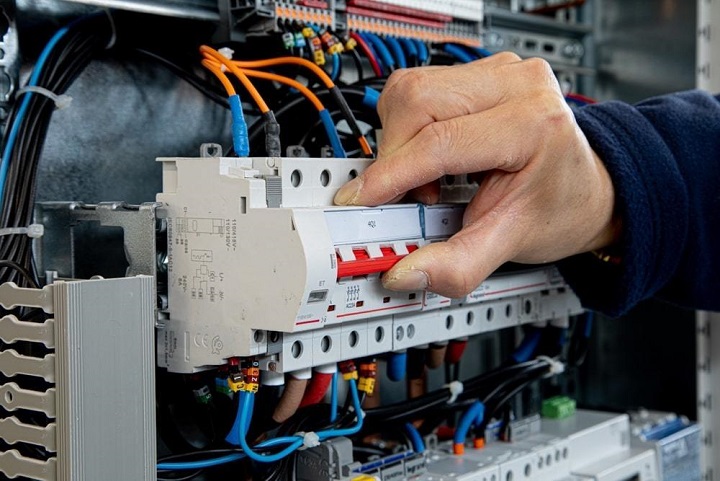In the world of electrical engineering and home safety, circuit breakers play a pivotal role. These essential electrical devices protect our homes and businesses from electrical overloads and short circuits, preventing potential disasters.
If you want to expand your knowledge about circuit breakers, you are at the right place. In this article, we will delve into the mechanisms and various types of circuit breakers, shedding light on their importance and functionality. But first, let us understand what circuit breakers are.

Introduction to Circuit Breakers
Circuit breakers are electrical devices engineered to interrupt the flow of electric current when a fault is detected. They serve as a crucial safety measure, preventing electrical fires and equipment damage. If you plan to deal with electrical systems, understanding their mechanisms becomes essential.
The Basics of How Circuit Breakers Work
Circuit breakers work on the principle of Electromagnetism. Electric current flows through a circuit and generates a magnetic field around the conductor. In case of excessive current, the magnetic field becomes stronger. It triggers the circuit breaker to trip and disconnect the circuit.
Now, let us examine the different types of circuit breaker mechanisms.
Types of Circuit Breaker Mechanisms
There are two primary mechanisms employed in circuit breakers:
- Thermal-Magnetic Circuit Breakers: Thermal-magnetic circuit breakers utilise both thermal and magnetic properties to trip when necessary. The thermal component responds to sustained overloads, while the magnetic component reacts to sudden short circuits.
- Electronic Circuit Breakers: Electronic circuit breakers are more advanced and utilise microprocessors to monitor current flow. They offer precise control and can be reset remotely, making them suitable for modern applications.
Types of Circuit Breakers
Circuit breakers come in various types, each designed for specific applications and scenarios. Let’s explore some common types:
- Miniature Circuit Breakers (MCBs): MCBs are commonly found in residential electrical panels. They are compact and designed to protect individual circuits. MCBs trip when the current exceeds a predetermined limit.
- Molded Case Circuit Breakers (MCCBs): MCCBs are suitable for industrial applications. They provide protection against overcurrent and short circuits and can be reset manually.
- Ground Fault Circuit Interrupters (GFCIs): GFCIs are crucial for safety in wet areas such as bathrooms and kitchens. They detect ground faults and quickly interrupt the circuit to prevent electric shocks.
- Arc Fault Circuit Interrupters (AFCIs): AFCIs are designed to detect dangerous electrical arcs that can lead to fires. They are commonly used in residential settings in bedrooms and living areas.
- Residual Current Circuit Breakers (RCCBs): RCCBs monitor the balance of current between the live and neutral conductors. They are essential for protecting against electric shocks and fires.
Choosing the Right Circuit Breaker
If you are planning to choose a circuit breaker for your electrical systems, ensuring its specifications for maximum safety and efficiency is crucial. It is advisable to consider a range of factors before purchasing. They include current ratings, voltage requirements, and the environment in which the circuit breaker will be installed.
Circuit breakers are the unsung heroes of electrical systems, safeguarding homes and businesses from electrical mishaps. It is best to understand their mechanisms and types for maintaining electrical safety.
Whether you’re a homeowner or an electrical engineer, knowing how to choose the suitable circuit breaker can make a significant difference in preventing accidents. You should always choose high-quality circuit breakers from reputable brands to ensure optimal performance and enhanced security.